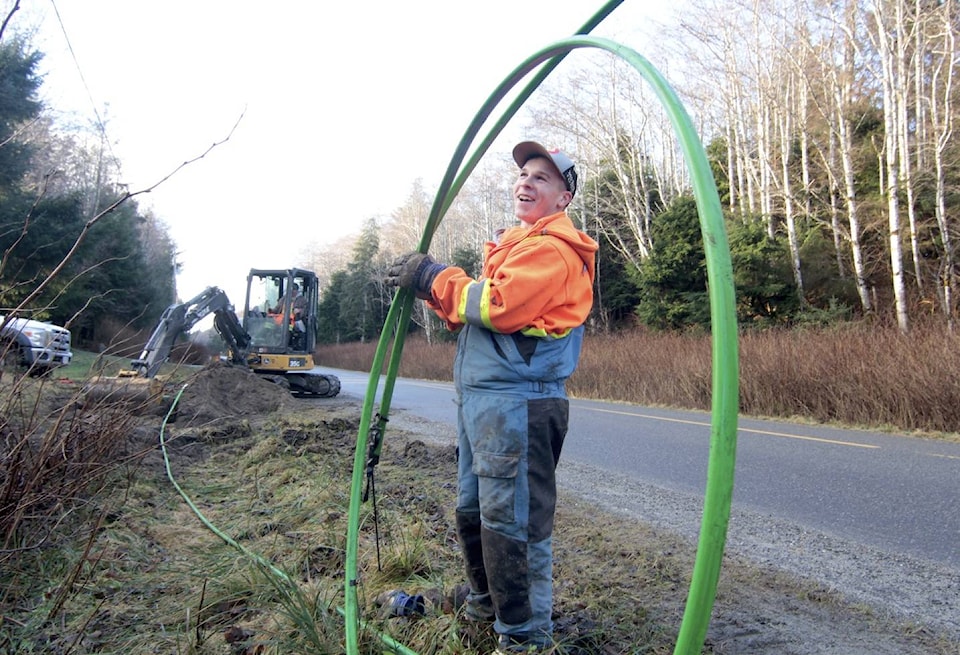Make no mistake, the islands’ new fibre-optic network is lit.
Carol Kulesha, chair of the non-profit GwaiiTel Society, says that in the last four years, traffic over the GwaiiTel internet network has grown from 70 to over 500 megabits per second (Mbps).
“We’re using a lot more internet,” Kulesha said, noting that anyone who gets access from the local internet service provider, Gwaii Communications, is using the new underground fibre-optic mainline that GwaiiTel buried between Old Massett and Skidegate last year.
Some readers wondered if the $10-million line was active at all after a vehicle hit a phone pole on Oct. 18, cutting off internet access to the Haida Gwaii Hospital and several other places south of Tlell for the day.
But that was another, separate fibre-optic network, run by Telus, that relies on overhead lines.
Not only the hospitals, but also schools and natural resource offices on island all connect to the internet through the Telus network — part of a 10-year, province-wide contract signed by Telus and the B.C. government in 2011.
Under the contract, Telus also provides a full suite of long-distance, conferencing, data, cellular and other telecommunications services.
Kulesha said GwaiiTel had hoped local schools, hospitals, and provincial offices would use its network instead, in part because it is buried along the highway rather than strung up on poles, so it should be less vulnerable to a cut.
“We were in negotiations with the province to supply them, but by the time we received the grant and built it, the province had signed with Telus,” Kulesha said.
“That was definitely a blow,” she added, since GwaiiTel had hoped schools and other provincial institutions would become anchor clients. The non-profit is still in talks with local federal agencies.
Kulesha said GwaiiTel’s next major challenge for improving internet service is to install a third set of microwave radio dishes to carry data across the Hecate Strait from Old Massett to Prince Rupert.
The current microwave link still has unused capacity, but with the way usage is increasing, Kulesha said it won’t be long before local users hit a bottleneck. Surprisingly, the quality of the Hecate link also goes down on sunny summer days when the ocean is calm.
Looking ahead, Kulesha said GwaiiTel is encouraging the province to lay an undersea cable to replace the microwave link.
“Even if they decided to lay the subsea cable right now, it will still take an enormous amount of time, a few years, for it all to come together,” she added, so the extra pair of microwave dishes will certainly be needed.
Besides a better Hecate link, GwaiiTel has applied for a federal grant to improve the smaller microwave radio link between Skidegate and Sandspit.
“We thought we had a clear shot to Skidegate, that the antenna was working well, but we did a study and it’s not,” Kulesha said. “So we have to do a better job for Sandspit.”
Separately, GwaiiTel has played a supporting role in Gwaii Communications’ application for federal grants — funding that would help the local company hook up new users in Tow Hill, Tlell, and other under-served areas. Without grant support, such “last-mile” connections could be prohibitively expensive.
“We’re all waiting for announcements,” Kulesha said. “I wait with bated breath.”
